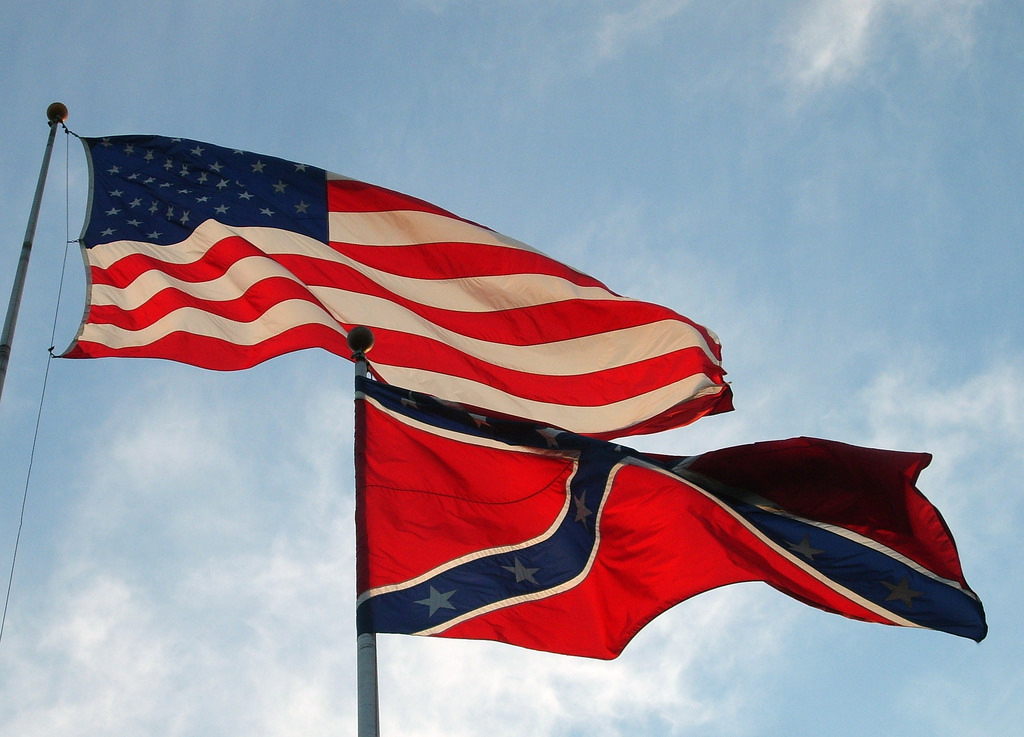Let’s Keep Arguing About Flags and Statues

Last summer, the Confederate flag was finally taken down from the Statehouse in South Carolina. Almost from the moment it was raised in 1961, it provoked debate: Was it a symbol of regional heritage, or racist oppression? But the shooting of nine African-American worshippers at a church in Charleston on June 17, 2015—by an avowed white supremacist who had posed with the flag—changed the terms of the debate. The governor swiftly ordered the flag’s removal from the Statehouse grounds.
Arguments about historical commemoration across the United States are as common and fiery as firecrackers on the Fourth of July. As in the South Carolina case, these battles often concern majority-minority relations and questions about a past that some people see as unjust but others see as glorious.
As historians can attest, there is no such thing as a completely objective account of the past. The truth about history, or its meaning, resides only in the present. Our knowledge of the past changes, both because historians and the larger public bring new evidence to light, and because their attitudes about what they want to learn change. Just as the truths of history change, so too can commemorative symbols become subject to re-evaluation.
The historical memory surrounding even the most celebrated ancestors can change, like that of Declaration of Independence author Thomas Jefferson, who fought to end the slave trade but also owned many slaves throughout his life. My home institution, the University of Virginia, was founded by Jefferson and was built in part by slave labor. These facts have been known since Jefferson’s time, but only recently has the university begun to grapple with their significance. Thus preparations for the celebration of the university’s bicentennial in 2017 are being accompanied by a lively debate about how to incorporate the history of slavery and enslaved people into our institutional history.
Such debates are occurring at universities across the country. How should today’s students, professors, and alumni respond to the fact that many of these institutions were endowed with riches gained through slavery? At one end of the spectrum, there are people who want to change the names and take down the statues; at the other end are people who are against all such changes. And in between are those who propose new commemorative objects to be incorporated into the current built environment—a plaque here, a new building with a different sort of name there—to produce, they say, a fuller, richer, or truer history.
We must remember that although such symbols have an enduring public and physical presence that written histories lack, their symbolism often goes unrecognized. The people who pass daily through places named after historical figures remain blissfully unaware of the commemorative messages that surround them. Statues of heroes, erected with ceremonial fanfare, sink into invisibility within a few years.
Whether the statues stay or go is less important than the ongoing conversations they stimulate about the meaning of our national history. As citizens reinterpret this history, invisible markers become suddenly controversial and newly visible. From the subsequent debate—between, for example, those who see in the Confederate flag the sacrifices of their ancestors and those who see in it the seal of an oppressive, racist state—new versions of the American story emerge.
Such debates are less about the ultimate “truth” of history—which is unknowable—than about what we choose to remember, and who we are today. Commemoration is not history; it is about history. It shapes people’s attitudes toward the past and influences what they want to know about it.
We need to learn and teach a great deal more about our history of conquest, slavery, and immigration, and examine its relationship to the structural inequalities of the present. These histories are not mere sideshows. They need to be incorporated fully into the story of our country, so we can squarely confront the contradiction between slavery and liberty that Jefferson, for one, so starkly represents. If debates about commemoration lead us to new historical understandings, and new evaluations of today’s world, they will have served their purpose, whatever the fate of the flags and statues that prompted the discussion.

































